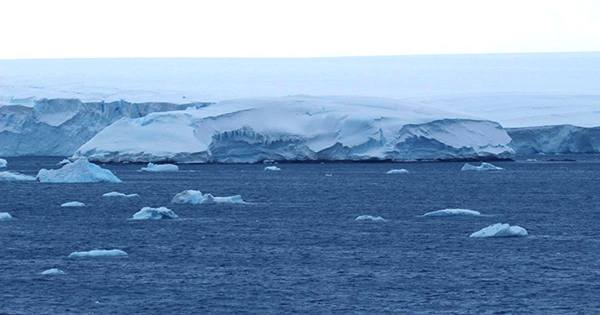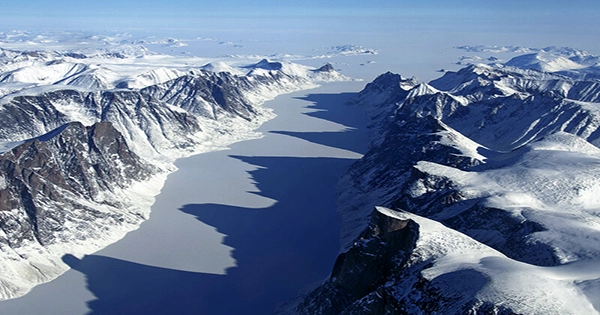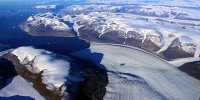If there’s one thing we know about Vikings, it’s that they were everywhere. In their travels away from their Scandinavian birthplace, they visited Spain and crossed the Atlantic to Canada; they even made it to the Middle East, where they named the present republics of Russia and Belarus. Then they fled — at least in regions like Greenland. Nobody truly knew why for a long time.
Now, a research published in Science Advances may provide the ultimate answer as to why the Vikings departed Greenland – and it’s not what everyone expected. According to the report, “Norwegian immigrants established the Eastern Settlement in southern Greenland around 985 CE,” but “the territory was completely abandoned by the early 15th century.”

The authors add, “As some earlier research have shown, this desertion may have been caused by a variety of factors, including climatic change, managerial failure, economic collapse, or social stratification.” “Agriculture was always at its limit in southern Greenland.” So why did the Vikings pack their belongings and go after more than 400 years of flourishing in the deceptively tiny and not particularly green land? Until today, the popular belief was that they couldn’t stand the cold.
That’s not a knock on the Vikings’ toughness; life was genuinely colder back then, as Earth had just entered the “Little Ice Age,” a time of significant cooling. It wasn’t just a question of layering up or adding another log to the fireplace: the two-degree Celsius decrease triggered nothing short of a global disaster, according to academics Ariel Hessayon and Dan Taylor in a recent piece for The Conversation.
They report that “rivers and coastal waters froze, grinding trade and communications to a standstill.” “Crops and cattle wilted, and crops were ruined by downpours, resulting in widespread famine and misery.” Even today, Greenland isn’t exactly known for its hot summers – even though it should be – so it’s understandable that this Little Ice Age would put a stop to farming in the icy wasteland. Geological evidence, such as ice core data used to reconstruct Greenland temperature variations across time, tended to corroborate that view as well. It appeared to be a simple situation. There was just one issue.
Raymond Bradley, University Distinguished Professor of geosciences at UMass Amherst and one of the paper’s co-authors, noted, “There was no data from the actual location of the Viking settlements before this study.” “And that’s the issue.” While the data does reveal that Greenland got too cold for agriculture during the Little Ice Age, it did so for a portion of Greenland thousands of kilometers away from where the Vikings actually arrived.
“We wanted to see how climate has changed near the Norse farms,” Bradley explained. That’s when the shocks began to appear. While there are no ideal ice cores near the old Viking villages, there was something that was nearly as good: a lake, only nine kilometers from the little community of Qassiarsuk and known as Lake 578. Today, Qassiarsuk is… well, “small” is an understatement: it has a population of only 39 people in 2020. It was known as Brattahl a thousand years ago, and it was home to some of Viking Greenland’s greatest farms.
That made it ideal for researching the changing circumstances in Norse settlements, as well as determining why they were abandoned. “This site has never been researched before,” said Boyang Zhao, the study’s principal author. As a result, he and his colleagues meticulously collected sediment samples from the lake for three years in order to study the temperature and water availability in the area during the previous 2,000 years. “What we observed is that, despite the temperature of the Norse colony of southern Greenland scarcely altered over time, it grew gradually dryer,” Zhao added.
The Greenlandic Vikings would have perished in such increasingly arid conditions. Even in good years, farming in the villages was difficult: “in winters, cattle, some sheep and goats had to be kept in the warm dark byres,” according to the report, “and by spring, many animals were too weak to move and the Norse farmers had to take them out to graze.” Even this slightly viable model, however, would not be able to survive in a drought. Less rain produced poorer agricultural yields, which meant farmers couldn’t feed their cattle over the winter.
Some went to the water for food, hunting marine creatures to replace the animals they couldn’t produce on land – but this was considerably riskier than farming, and there was no assurance of a meal at the end of it. The destiny of Viking Greenland was all but certain as food became short and insecure, and growing sea ice threatened to shut the inhabitants off from mainland Europe, according to the research. Unable to cope with the drier circumstances, the settlers would have faced escalating social unrest until they were compelled to quit their homes in search of, if not warmer, then at least wetter climates.
The research finds, “The causes of Norse settlement abandonment are complicated, and it is impossible to simply assign them to climate change.” “However, our findings show that hydroclimate changes were inextricably linked to the fate of the Eastern Settlement.”














